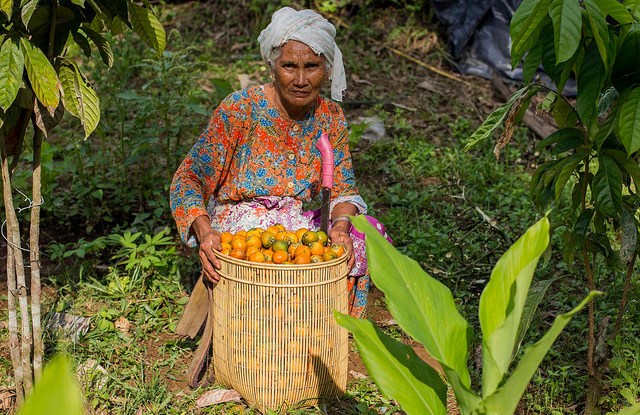
With climate change causing shifts in migration patterns, which in turn increases pressure on scarce land and natural resources, experts at a global conference have called for a greater focus on resilience and holistic approaches as a way of averting conflict.
“Environmental migration is not a new form of migration, but climate change makes it different,” said Paula Caballero, a Senior Director at the World Bank, told a dedicated session at the 2015 Global Landscapes Forum, held alongside COP21 in Paris this month.
One of the big issues is that migration, which often takes place in response to the effects of climate change or conflict, exacerbates those effects on the environment, said Louise Baker, Coordinator for External Relations and Policy with the United Nations Convention to Combat Desertification.
“It becomes a bit of a degrade–abandon–migrate paradigm,” Baker said. “People move to find opportunities,” leading to “a vicious cycle.”
MOVING ON
While traditional seasonal migration is inherently temporary in nature, new migration patterns are putting more pressure on the landscape and existing populations, said Stephen O’Brien, Under-Secretary-General for Humanitarian Affairs and Emergency Relief Coordinator with the United Nations Office for the Coordination of Humanitarian Affairs.
“What’s changed is that a lot of it has become protracted,” O’Brien said. “Some of that protractedness is political failure, but a lot of it is to do with the burden of trying to get the balance between climate resources and the ability to support human life.”
Even as these issues have grown more pressing, however, Caballero said that drawing the attention that they deserve has been challenging.
“As Senior Director for Environment and Natural Resources, I find myself constantly having to make the case that environment is not just about a specific toad or a specific fish or a panda bear, that it really is, at its core, about people,” she said.
Crushing poverty drives a lot of migration into increasingly marginal environments, said Antoinette Macumi, Adviser to the Minister of Water, Environment, Land and Urban Planning in Burundi, where many farmers have been forced onto the African nation’s steep, flood-prone slopes.
“The strong dependency of the population on natural resources – in particular water and soils – has an impact on their survival and livelihoods,” Macumi said.
The resilience of the land is absolutely crucial for people who rely on it. It’s the only resource that they’ve got.
RESILIENCE IS CRUCIAL
The landscape approach provides a methodology for harmonizing the demands that humans make of the land, Baker said.
It’s a way of “recognizing that we do need urban development, we do need industry, we do need forestry, we do need arable land and that’s all got to work together,” she added. “One can’t win at something else’s loss.”
In the view of Djimé Adoum, landscape planning goes even further.
“The landscape is not only a technical framework,” said Adoum, Executive Secretary of the Permanent Interstates Committee for Drought Control in the Sahel (CILSS). “The landscape approach is also to bring people together around the table and agree upon what are the objectives.”
We have done things that actually give us faith that we can do better.
He pointed to migration from dry Sahelian countries such as Niger and Burkina Faso. Those migrants’ arrival in coastal West African nations has acted as a multiplier of the degraded land in those countries.
Côte d’Ivoire, Benin, Togo, and Guinea have been affected by the exodus from the Sahel, according to Adoum.
“Those countries came and said, ‘Wait a second. It is getting browner and browner, and it starts to look like the Sahel.’
“So what did they do? They joined CILSS” to help manage the migration and limit the environmental impacts, Adoum said: By joining CILSS, these countries have chosen to “sit down and talk” to work out solutions.
“We have done things that actually give us faith that we can do better,” Adoum said.
In summing up the discussion, Baker brought together the human and environment elements.
“The resilience of the land is absolutely crucial for people who rely on it. It’s the only resource that they’ve got,” she said. “It has to be functional. It has to be productive and healthy for them to be able to adapt.”
We want you to share Forests News content, which is licensed under Creative Commons Attribution-NonCommercial-ShareAlike 4.0 International (CC BY-NC-SA 4.0). This means you are free to redistribute our material for non-commercial purposes. All we ask is that you give Forests News appropriate credit and link to the original Forests News content, indicate if changes were made, and distribute your contributions under the same Creative Commons license. You must notify Forests News if you repost, reprint or reuse our materials by contacting forestsnews@cifor-icraf.org.
